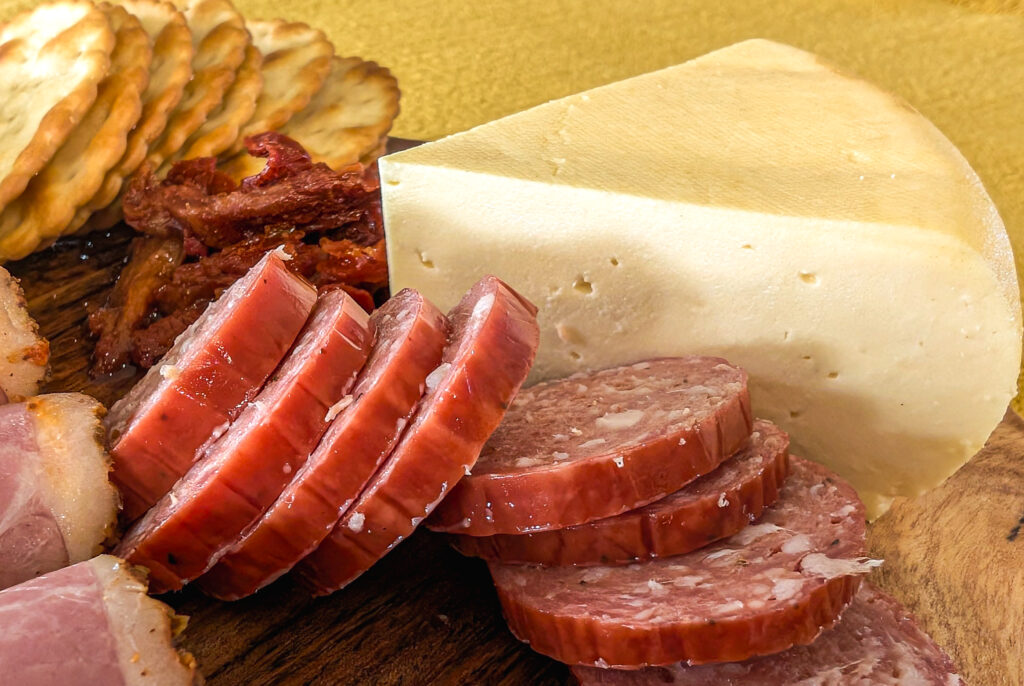
Cheshire is an English cheese, possibly one of the oldest, dating back to before the Romans occupied the area that is now known as Cheshire. It was mentioned in a book written in 1086 at the order of William the Conqueror, known as the Domesday Book. It has a moist, crumbly texture with a mild, salty taste. Based on these characteristics, I thought this cheese would be an excellent choice for making pickled onion cheese. You can follow the Chester recipe and leave out the pickled onion, or add this robust flavour, which makes this cheese a favourite in my home.
Ingredients:
- 8 litres of milk
- ¼ teaspoon of calcium chloride diluted in ¼ cup non-chlorinated water
- Mesophilic hard curd cheese starter culture (see the packet for the amount to add)
- ½ tablet of rennet or ½ teaspoon of liquid rennet diluted in ¼ cup of non-chlorinated water
- 200 grams of cheese salt
Equipment:
- A stainless steel pot to place your milk in
- A second, larger pot to place your first pot in to act as a water jacket, so that you can indirectly heat your milk
- Dairy thermometer
- Stainless steel perforated spoon
- Stainless steel curd knife
- Stainless steel ladle
- Loose-weave cheesemaking cloth
- Cheese mould or basket and follower
- Cheese press
- Wooden cheese board or cheese mats
- Cheese wax and brush, or a vacuum sealer
Instructions:
- Place your milk into a large stainless-steel pot, and then place this pot in your second, larger pot filled with water to act as a water jacket. Add your calcium chloride and mix well.
- Using indirect heat, slowly heat your milk to 38°C. Add your starter culture, stirring gently to ensure it is well mixed.
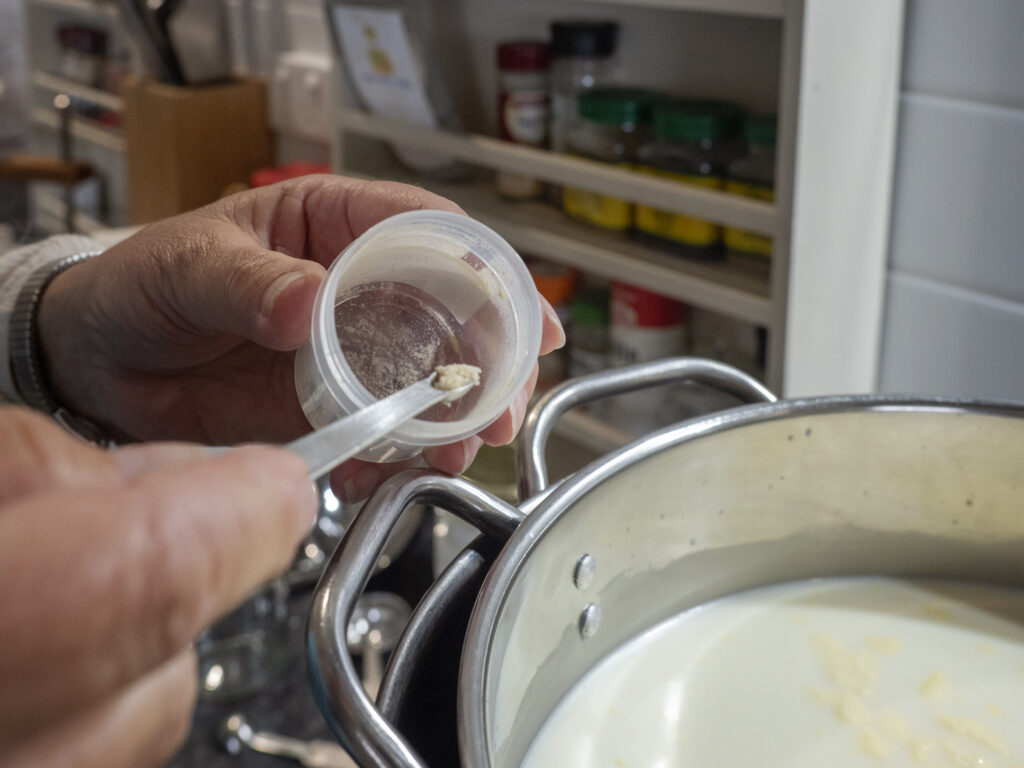
- Add your rennet solution to the milk and stir gently, using an up-and-down motion for one minute, ensuring that the rennet is evenly distributed throughout the milk. Cover and allow to rest undisturbed for 90 minutes, maintaining the temperature at 38°C.
- Check for a clean break. If the curd is not firm enough, leave it for another five minutes and check again. Be patient and wait for a clean break.
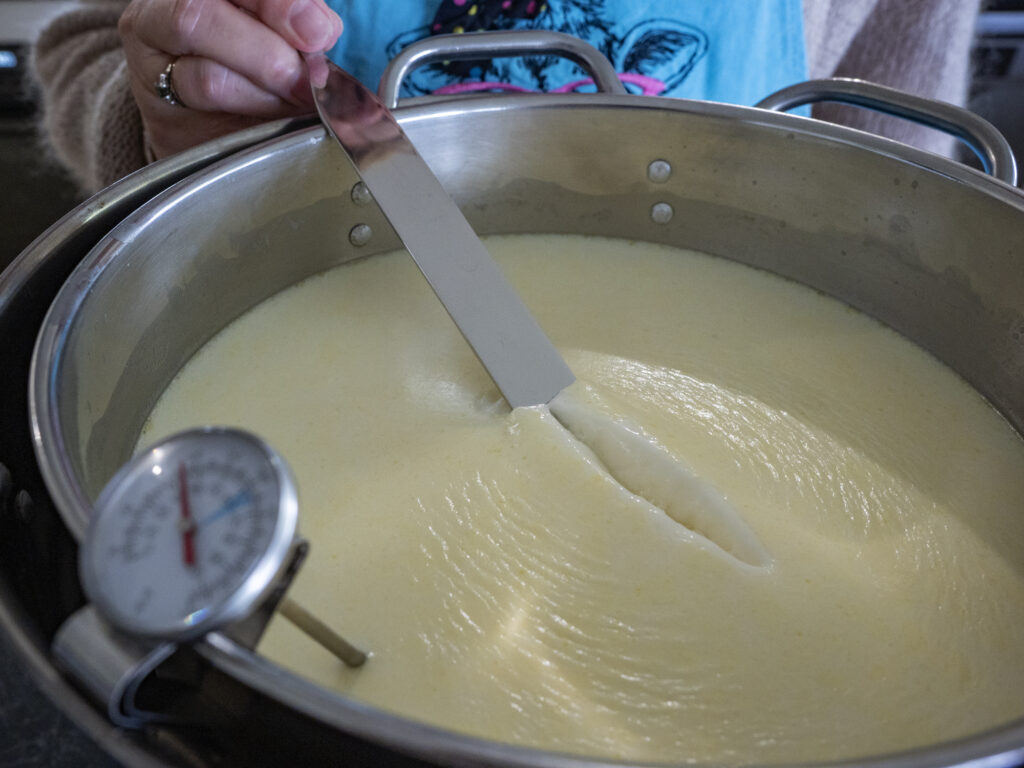
- Once the curd is firm enough and gives a clean break, cut it into cubes that are approximately one to one-and-a-half centimetres in size.
- Stir the curds for ten minutes, then let them rest for ten minutes. Repeat this twenty-minute cycle twice more for a total of one hour, with ten-minute intervals of stirring and resting.
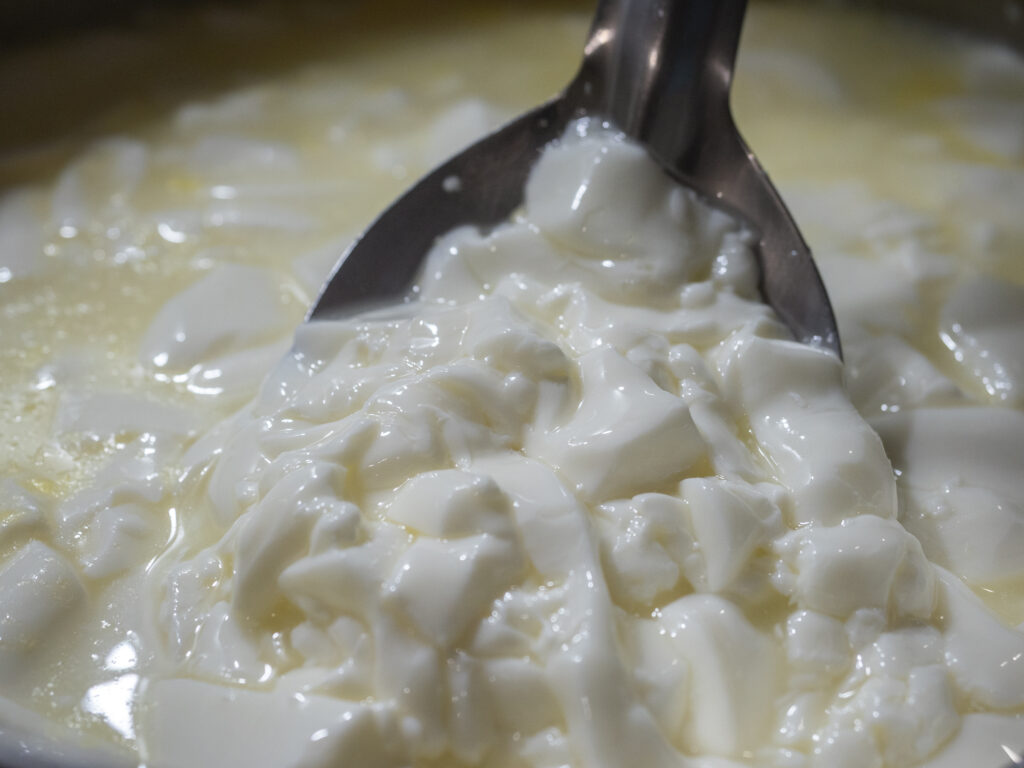
- Pour off the whey until it reaches the level of the curds, cover, and allow to rest for three hours.
- After three hours, drain off the remaining whey. Using your fingers, break up the curds into two-centimetre pieces. Mix in the 200 grams of cheese salt using your fingers, ensuring it is evenly distributed throughout the curds.
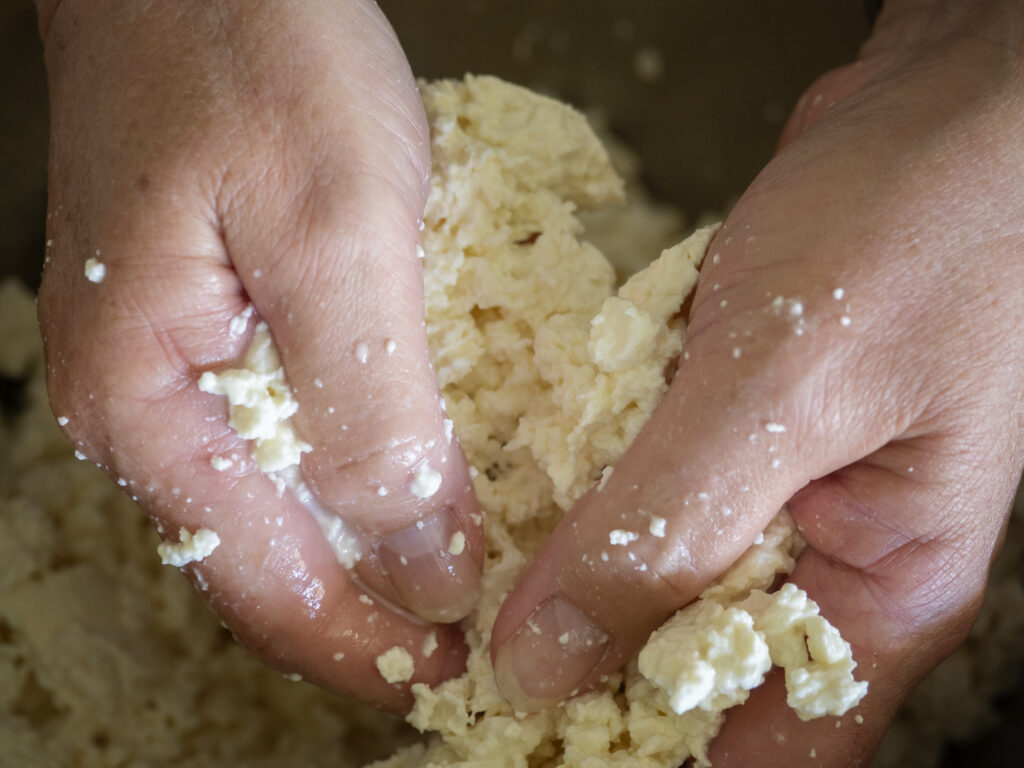
- Line your cheese basket with a loose-weave cheesemaking cloth and pack your curds into the basket. Fold the cloth neatly over the curds, avoiding any lumps of fabric, and then place your follower on top of the covered curds.
Not that I added some chopped-up pickled onions to the curd at this point, which is not necessary, but it was a bit of fun.
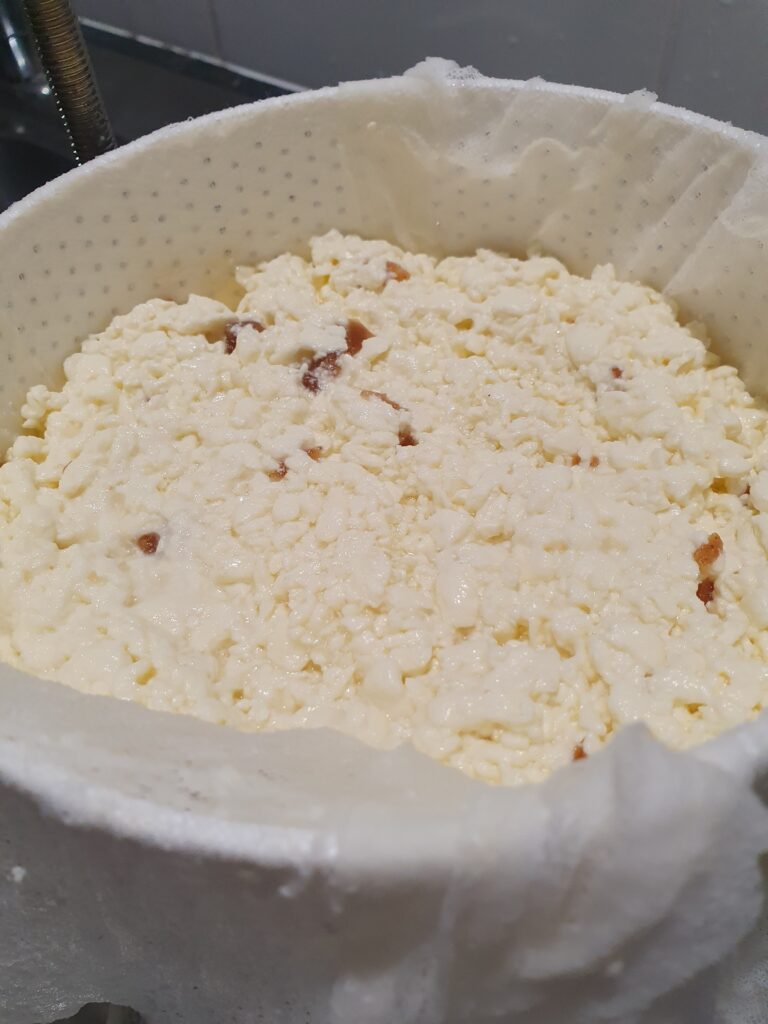
- Using your cheese press, press at five to ten kilograms for 24 hours.
- Remove the cheese from the basket, carefully peel away the cloth, turn the cheese over, and redress it with a fresh cheesecloth before returning it to the basket. Press again at about five to ten kilograms for another 24 hours.
- Remove your cheese from the basket and carefully remove the cloth. It is important not to tear the surface of the cheese. Air-dry the cheese at room temperature on a wooden board or mat. This will take 3-5 days, depending on the humidity. Turn the cheese over twice a day to ensure the moisture within the cheese does not collect on the bottom. If any unwanted mould begins to develop on the surface of your cheese during the drying stage, carefully wipe it off with a cheese-making cloth moistened with some vinegar or salt water.
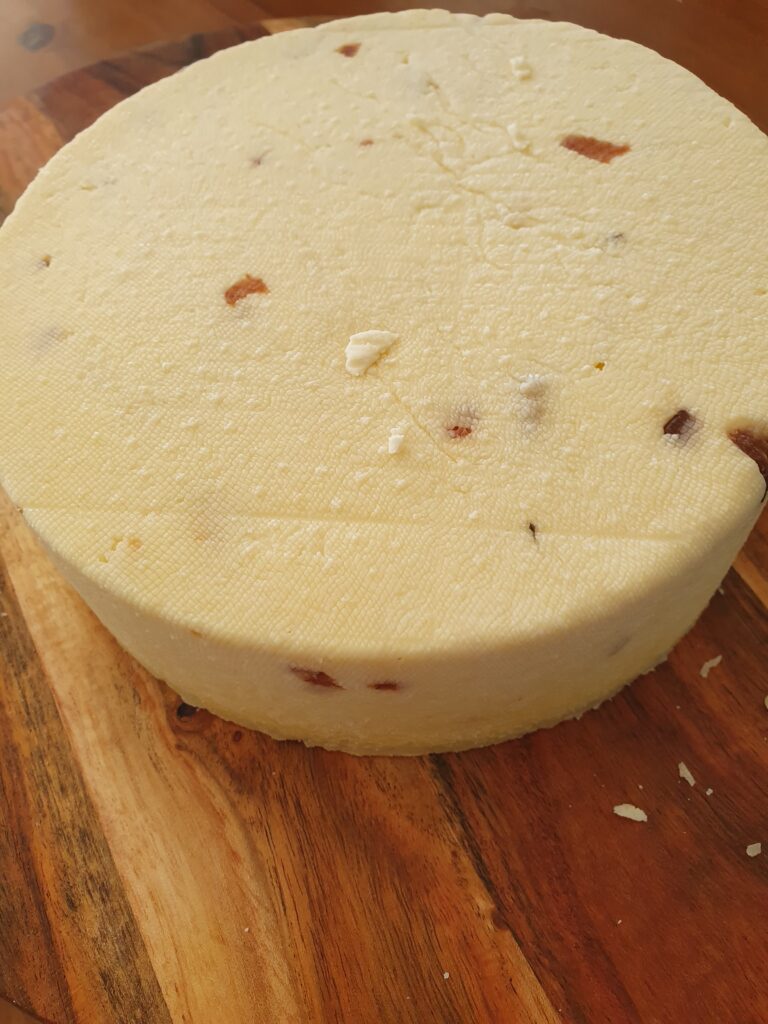
- Once your cheese has been dried, it can be waxed or vacuum-packed to protect it while it matures. After your cheese has been waxed or vacuum-packed, age it at 10°C to 12 °C for three to six months before eating. Turn your cheese over twice a week to ensure even moisture distribution throughout.
I thoroughly enjoyed this cheese, both its making and its eating.
As always, live well
Valerie
How many pickled onions did you use for this cheese and how did get get evenly distributed through the cheese. Also, could I use buffalo milk for this cheese.
I used two large, chopped pickled onions, mixing them into the curds with my fingers as I mixed in the salt.
Valerie
Hi Valerie,
Can I make Cheshire cheese with Buffalo Milk because we have a buffalo dairy near where we live.